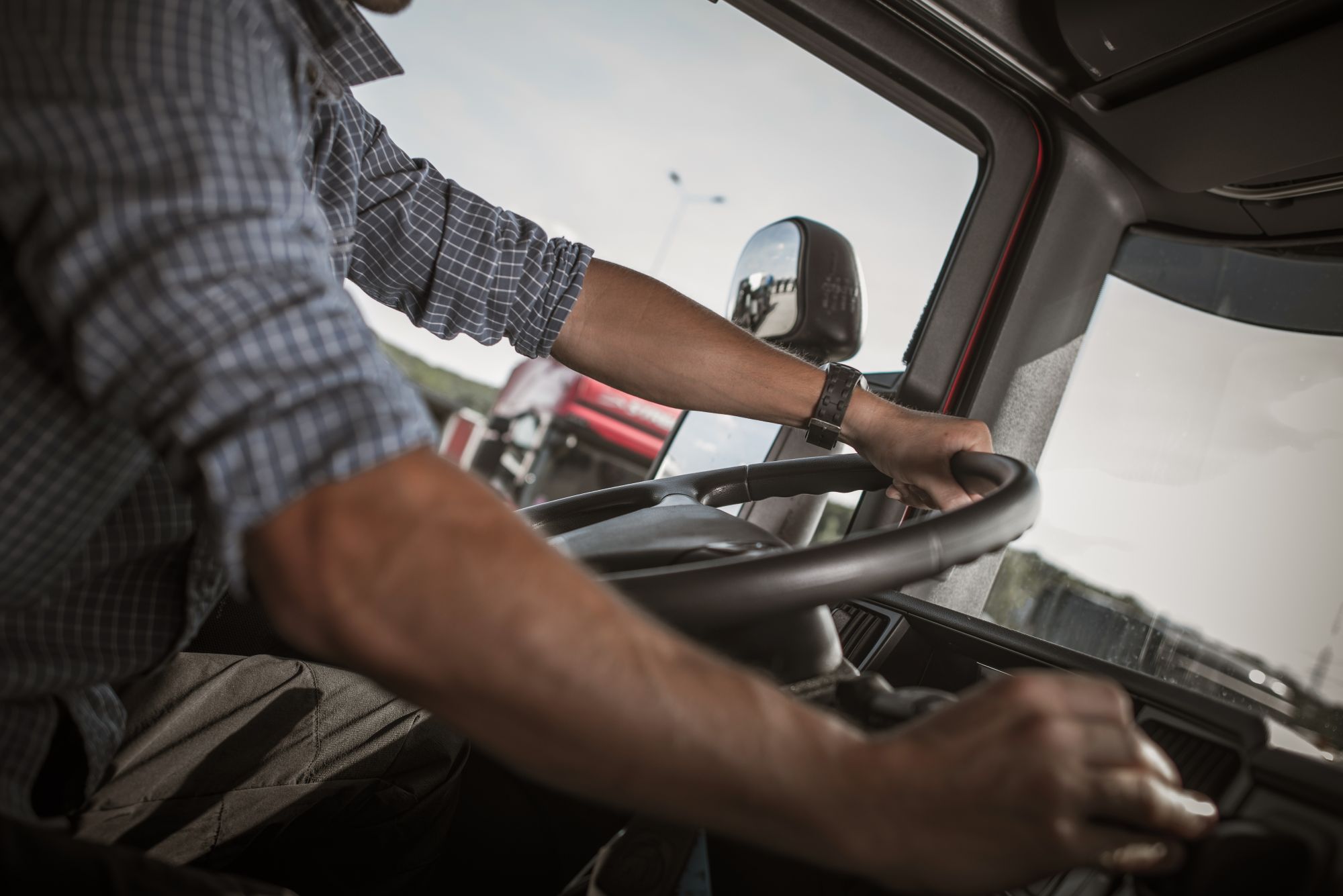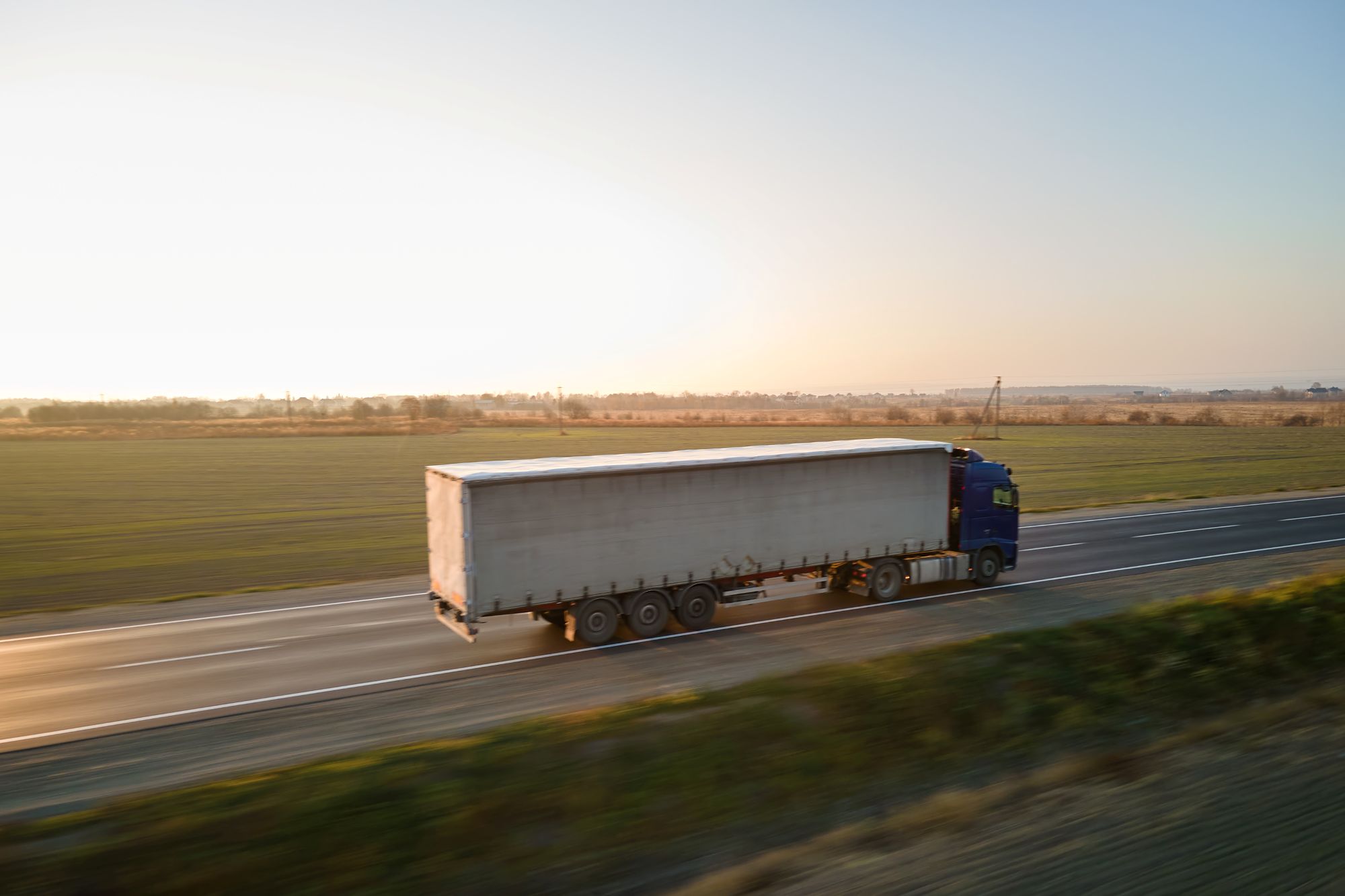
Guest
Inteligentné tachografy druhej generácie: Čo by mali vedieť manažéri vozových parkov
Vytvorené: 28. 10. 2025
•
Aktualizované: 28. 10. 2025
Odvetvie cestnej dopravy v Európe prechádza významnou zmenou v súvislosti so zavedením druhej generácie inteligentných tachografov (Smart Tachograph Version 2 alebo G2V2). Tieto nové zariadenia boli zavedené v rámci balíka opatrení EÚ v oblasti mobility s cieľom zvýšiť bezpečnosť cestnej premávky, zabezpečiť spravodlivú hospodársku súťaž a chrániť práva vodičov.
Pre manažérov vozových parkov v celej EÚ - a v Spojenom kráľovstve pre tých, ktorí vykonávajú medzinárodnú prevádzku - je veľmi dôležité pochopiť, čo nový inteligentný tachograf v2 zahŕňa, aké sú časové lehoty na jeho zavedenie a ako ovplyvní každodennú prevádzku. Tento článok poskytuje praktický prehľad funkcií G2V2, regulačných termínov a prevádzkových dôsledkov pre vozové parky.
Čo je inteligentný tachograf druhej generácie?
Inteligentný tachograf druhej generácie je modernizovaná jednotka digitálneho tachografu s rozšírenými funkciami, ktorá je navrhnutá tak, aby zvýšila dodržiavanie pravidiel jazdy a zefektívnila ich presadzovanie.
Nový inteligentný tachograf, ktorý nadväzuje na prvé inteligentné tachografy predstavené v roku 2019, pridáva niekoľko dôležitých funkcií:
Sledovanie pomocou GNSS s automatickou detekciou hraníc: Zariadenia G2V2 využívajú satelitné určovanie polohy (Galileo GNSS) na zaznamenávanie polohy vozidla pri prekračovaní štátnych hraníc. To pomáha presadzovať pravidlá kabotáže a vysielania vodičov tým, že poskytuje presné záznamy o tom, kedy nákladné vozidlo vstúpi do novej krajiny.
Diaľkový prístup k údajom pre orgány činné v trestnom konaní: Nový tachograf umožňuje orgánom činným v trestnom konaní bezdrôtovo získavať údaje prostredníctvom vyhradenej komunikácie na krátke vzdialenosti (DSRC). Cestní inšpektori môžu na diaľku získať informácie o poslednom čase jazdy, poslednej zastávke alebo potenciálnych porušeniach, keď sa k nim blíži nákladné vozidlo. V podstate môžu orgány presadzovania práva získať prístup ku kľúčovým údajom tachografu G2V2 bez zastavenia vozidla, čo uľahčuje inteligentnejšie a jednotnejšie presadzovanie pravidiel týkajúcich sa pracovného času vodičov.
Táto možnosť "kontroly na diaľku" umožňuje orgánom vopred vybrať vozidlá, ktoré môžu potrebovať podrobnejšiu kontrolu, čím sa znižuje počet zbytočných zastavení pre vodičov, ktorí dodržiavajú predpisy.
Integrácia s telematikou (rozhranie ITS): G2V2 obsahuje povinné rozhranie ITS s pripojením Bluetooth na bezpečnú výmenu údajov so systémami tretích strán. To znamená, že telematické platformy vozového parku sa môžu spárovať s tachografom a získať prístup k údajom, ako je poloha vozidla, rýchlosť, činnosť vodiča a dokonca aj udalosti vozidla (napríklad použitie bŕzd) v reálnom čase.
Manažérom vozového parku táto integrácia ponúka možnosť bohatších dátových tokov na monitorovanie dodržiavania predpisov a riadenie trás, pričom informácie z tachografov sa bezproblémovo prepojia s existujúcim softvérom na riadenie vozového parku.
Vylepšený záznam údajov: Nové tachografy G2V2 zaznamenávajú viac informácií a uchovávajú ich dlhšie. Záznamy o činnosti vodiča teraz pokrývajú 56 dní namiesto 28, čím sa predlžuje kontrolné obdobie na presadzovanie predpisov a pomáha prevádzkovateľom pri uchovávaní údajov a auditoch. Okrem toho nové dátové polia poskytujú úplnejší obraz o každej jazde. Zariadenia zaznamenávajú miesta nakládky a vykládky, zaznamenávajú, či vozidlo prepravuje cestujúcich alebo tovar, a podrobnejšie zachytávajú udalosti konfigurácie a kalibrácie. Tieto aktualizácie spoločne podporujú dodržiavanie predpisov aj plánovanie logistiky. Vodiči však budú potrebovať školenie na vykonávanie nových manuálnych záznamov o miestach nakládky a vykládky, pretože tieto súradnice sa ukladajú na neskoršie overenie.
Silnejšia ochrana proti neoprávnenej manipulácii a zabezpečenie do budúcnosti: Jednotky druhej generácie sú vybavené vylepšeným zabezpečením, ktoré odhaľuje neoprávnenú manipuláciu a odoláva jej. Majú tiež aktualizovateľný softvér, ktorý umožňuje budúce vylepšenia. Okrem toho boli zavedené nové karty ovládačov (karty ovládačov G2V2) s väčšou pamäťou, aby sa na ne zmestili ďalšie údaje. Neexistuje žiadna bezprostredná zákonná požiadavka, aby vodiči vymenili existujúce karty do digitálnych tachografov, ak sú ešte platné, ale keď sa skončí platnosť kariet, budú nahradené aktualizovanými, aby sa mohli plne využívať funkcie G2V2.
Aktualizácia právnych predpisov
Väčšina hlavných termínov pre tachografy už uplynula. Všetky ťažké vozidlá, ktoré vykonávajú medzinárodnú dopravu v rámci EÚ alebo vstupujú zo Spojeného kráľovstva, musia mať nainštalovaný inteligentný tachograf druhej generácie (G2V2).
Jediným zostávajúcim míľnikom je 1. júl 2026, keď sa pravidlo rozšíri na ľahké úžitkové vozidlá s hmotnosťou od 2,5 do 3,5 tony používané v medzinárodnej doprave. V minulosti boli dodávky vyňaté z pravidiel EÚ týkajúcich sa pracovného času vodičov a tachografov, ale od júla 2026 budú musieť prevádzkovatelia prepravujúci tovar cez hranice tieto pravidlá dodržiavať.
Cieľom tejto zmeny je odstrániť dlhodobé medzery a zabezpečiť, aby vodiči menších úžitkových vozidiel dodržiavali rovnaké pravidlá času odpočinku ako prevádzkovatelia nákladných vozidiel. Manažéri vozových parkov, ktorí prevádzkujú celoeurópske vozové parky dodávkových vozidiel, by mali začať plánovať inštalácie už teraz a integrovať modernizáciu do bežných servisných prehliadok alebo cyklov obnovy vozového parku, aby sa minimalizovali poruchy.

Vplyv na medzinárodné flotily
Manažéri vozových parkov s medzinárodnou pôsobnosťou musia pochopiť, že dodržiavanie týchto aktualizácií tachografov je teraz nevyhnutnou podmienkou pre cezhraničnú cestnú dopravu v Európe. Ak vaše nákladné vozidlá cestujú medzi krajinami EÚ alebo zo Spojeného kráľovstva do EÚ, nevybavenie správnym tachografom môže zastaviť vašu činnosť na hraniciach.
Tu sú kľúčové body, ktoré sa týkajú rôznych vozových parkov:
flotily so sídlom v EÚ (medzinárodné operácie)
Ako bolo uvedené vyššie, od augusta 2025 musí mať každé ťažké nákladné vozidlo vykonávajúce medzinárodné cesty v rámci EÚ tachograf druhej generácie. Platí to bez ohľadu na to, kde v EÚ je nákladné vozidlo registrované. Presadzovanie sa vykonáva počas cestných kontrol alebo na hraniciach. Vozidlá, ktoré nespĺňajú požiadavky, môžu byť stiahnuté z ciest, kým nebudú nainštalované riadne tachografy.
Operátori zo Spojeného kráľovstva vstupujúci do EÚ
Britské vozové parky, ktoré vykonávajú medzinárodné cesty do EÚ alebo v rámci EÚ, podliehajú rovnakým požiadavkám na tachografy, ak prevádzkujú nákladné vozidlá. Dôvodom je, že pravidlá sú začlenené do zmluvy AETR, ktorá upravuje cestnú dopravu medzi európskymi krajinami EÚ a krajinami mimo EÚ. Ministerstvo dopravy Spojeného kráľovstva zosúladilo vnútroštátne predpisy tak, aby odrážali harmonogram EÚ pre medzinárodné cesty.
Nevykonanie aktualizácie neznamená len pokutu - môže to znamenať, že vaše nákladné vozidlo bude zastavené na kontrolnom stanovišti a nebude môcť dokončiť dodávku. Orgány v krajinách, ako je Francúzsko, uložili pokuty až do výšky 30 000 EUR a dokonca aj väzenie za závažné porušenie predpisov týkajúcich sa tachografov. Ďalšie krajiny ako Nemecko, Španielsko a Taliansko majú vlastné prísne sankcie. Okrem toho nedodržiavanie predpisov môže poškodiť povesť spoločnosti.
Pozitívom je, že flotily, ktoré dodržiavajú predpisy, môžu profitovať z plynulejšieho presadzovania predpisov. Napríklad nákladné vozidlá s modernými zariadeniami môžu byť vďaka diaľkovým predbežným kontrolám zastavované menej často, čo umožní vodičom dodržiavajúcim zákony pokračovať v jazde.
Vplyv na blaho vodiča
Jedným z hlavných cieľov nových právnych predpisov o tachografoch a širšieho balíka opatrení EÚ v oblasti mobility je zlepšiť pracovné podmienky. Automatizáciou evidenčných úloh, ako sú napríklad vstupy na hranice a obmedzenie nezákonného prekračovania plánov, systém pomáha zabezpečiť, aby si vodiči riadne oddýchli. Očakáva sa, že sa tým zníži počet incidentov súvisiacich s únavou a spravodlivejšie sa zabezpečí presadzovanie pravidiel, čo vodičom poskytne istotu, že konkurenti dodržiavajú rovnaké pravidlá.
Diaľkové presadzovanie predpisov tiež znamená, že vodiči, ktorí dodržiavajú predpisy, čelia menšiemu počtu zdržaní na cestách, čo im umožňuje dokončiť cesty s menším stresom.
Vodiči budú potrebovať určité školenie, aby sa prispôsobili. Hoci základy zostávajú rovnaké, nové funkcie vyžadujú manuálne zadávanie miest nakládky a vykládky a súhlas so zdieľaním údajov s pripojenými systémami. Pochopenie týchto výziev - a spôsobu reakcie v prípade poruchy - uľahčí prevádzku.
Z pohľadu vozového parku zariadenia G2V2 ukladajú dvakrát viac údajov (56 dní), takže počet stiahnutí bude väčší a bude obsahovať viac histórie. Prevádzkovatelia by mali skontrolovať, či ich softvér tachografov a systémy na ukladanie údajov zvládnu tento zvýšený objem.
V súvislosti s technológiou Bluetooth a online pripojením sa začalo hovoriť o ochrane osobných údajov. Orgány presadzovania práva majú prístup k údajom z tachografov na účely dodržiavania predpisov, ale pri zdieľaní s telematickými alebo riadiacimi systémami musia vodiči najprv udeliť súhlas. Manažéri vozových parkov by mali vodičov ubezpečiť, že všetky údaje sú spracované bezpečne a používajú sa len na legitímne účely v súlade s GDPR.
Plánovanie dopredu
Inteligentné tachografy druhej generácie sa dotýkajú každej časti prevádzky vozového parku, od dodržiavania predpisov a plánovania trás až po starostlivosť o vodiča. Aktívny prístup vám pomôže zachovať súlad s predpismi - a čo najlepšie využiť novú technológiu.
Zostávajte informovaní. Sledujte aktuálne informácie z oddelenia Európskej komisie pre mobilitu a dopravu, ako aj od priemyselných orgánov. Predpisy môžu byť zložité, ale oficiálne zhrnutia a často kladené otázky sú dobrým východiskom.
Školenie svojich tímov. Uskutočnite prednášky o nástrojoch alebo opakovacie školenia pre vodičov a manažérov dopravy so zameraním na nové funkcie, ako je vzdialené vynucovanie a manuálne zadávanie.
Optimalizujte svoje trasy. Údaje v reálnom čase vám pomôžu sledovať zostávajúce hodiny jazdy, upraviť plány dispečingu a identifikovať trasy, ktoré sa často približujú k limitom.
Vybudujte kultúru dodržiavania predpisov. Povzbudzujte svoje tímy, aby dodržiavanie tachografov vnímali ako súčasť správneho riadenia vozového parku, nielen ako zákonnú povinnosť. Uznávajte míľniky, ako napríklad nulový počet porušení predpisov, investujte do školení vodičov a uistite sa, že všetci chápu, ako presné údaje prospievajú bezpečnosti a efektívnosti.
Zavedenie G2V2 prináša výzvy, ale aj jasné výhody: prísnejšie presadzovanie, lepšie údaje a spravodlivejšie pracovné podmienky pre vodičov. Odmenou pre vozové parky, ktoré túto zmenu prijmú, je plynulejšia prevádzka, vyššia bezpečnosť a prepojenejšia, kompatibilnejšia budúcnosť na európskych cestách.
V spoločnosti SNAP podporujeme vozové parky na celom kontinente v tejto ďalšej fáze digitálnej transformácie. Prostredníctvom aplikácie intruck si vodiči môžu vopred rezervovať bezpečné parkovanie na svojich trasách, zatiaľ čo portál SNAP umožňuje manažérom vozových parkov vopred plánovať a rezervovať odpočívadlá, čím sa zabezpečuje dodržiavanie predpisov a ochrana blaha vodičov. [Zaregistrujte sa ešte dnes] (https://snapacc.com/sign-up/)



